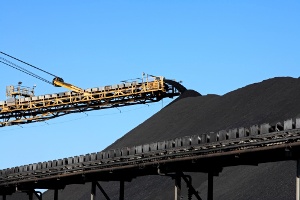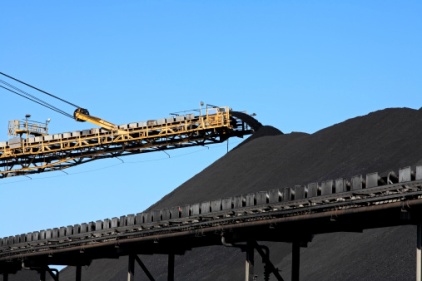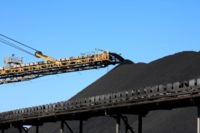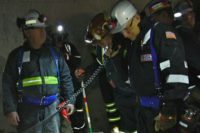 Assistant Secretary of Labor for Mine Safety and Health Joseph Main gave the mining industry credit for its role in the overall improvement in the compliance level at mines across the country, but said bringing all mines into compliance should be the goal of the entire industry.
Assistant Secretary of Labor for Mine Safety and Health Joseph Main gave the mining industry credit for its role in the overall improvement in the compliance level at mines across the country, but said bringing all mines into compliance should be the goal of the entire industry.
In a speech at the West Virginia Coal Association's 39th Annual Mining Symposium in Charleston yesterday, Main discussed the current state of mine safety and health — and ongoing efforts to improve it — by both the Mine Safety and Health Administration (MSHA) and the mining industry at large. Main highlighted a number of strategic initiatives that have been implemented which the agency believes have markedly improved miner safety and health, including monthly impact inspections, the pattern of violations program, and education and outreach within the industry.
"Enhanced enforcement and regulatory and administrative changes, along with increased compliance and responsibility from the industry, have resulted in gains for the cause of miner safety," said Main. However, he cautioned that much work remained to be done.
"MSHA cannot be at every mining operation every shift of every day," he said. "There aren't enough resources to do that. The law clearly places the responsibility of maintaining a safe and healthful workplace squarely on the operator's shoulders. Improved mine safety and health is a result of operators taking up that responsibility and exercising it. Taking more ownership means finding and fixing problems and violations of the laws and rules before MSHA finds them — or more importantly — before a miner becomes ill, is injured or dies. Many mines all across this country operate every day while adhering to sound health and safety programs. There is no reason that every mine cannot do the same."
Since the MSHA's impact inspection program began in earnest in April 2010 -- following the explosion at the Upper Big Branch Mine -- the agency has conducted 387 impact inspections and issued 7,655 citations, orders and safeguards.
"Overall compliance is improving at mines receiving impact inspections," said Main. "Violations per inspection hour are down 11 percent after mines received an initial impact inspection. Significant and substantial violation rates are down 18 percent; 104(d) orders are down 38 percent. The total self-reported lost-time injury rate at these mines is down 18 percent."
"We believe our changes to the pattern of violations process also are improving safety," Main said. "Since November 2010, 28 potential pattern of violations notices have been issued at 26 mines. Two POV notices were issued, the first time any mine was successfully placed on POV and issued closure orders in the Mine Act's 33-year history. Since completing the PPOV process, the total violation rate among 14 mines that received PPOV notices in 2010 is down 21 percent, the total S&S violation rate is down 38 percent, and the rate of 104(d) withdrawal orders is down 60 percent. The lost-time injury rate at these mines has dropped 39 percent."
Preliminary data indicate that compliance by mine operators is improving. In 2011, MSHA inspected approximately 14,000 mines and issued 157,894 citations and orders, down from 171,373 in 2010. Forty-nine percent of those violations were cited at underground coal mines, a sector representing only 5 percent of the total mines inspected. It's also a sector that continues to grow. The number of underground coal mines increased by nearly 6 percent, and the number of mining units increased by nearly 9 percent. "Underground coal mines unquestionably have the most challenging compliance issues and received much of the agency's attention," said Main.
Thirty-seven miners died in work-related accidents last year, the second lowest since statistics have been recorded. Main noted that the first year the Federal Mine Safety and Health Act of 1977 was in effect, 273 miners died. "We've seen those numbers continue to fall since then, and the distance to zero is much shorter now than it was in 1977," he said.
Main outlined other important initiatives implemented under his watch that have resulted in positive reform:
Rules to Live By: This multi-phase initiative, in phase one, focused on the most common mining deaths and standards cited most often in mining death investigations. Phase two focused on preventing catastrophic accidents, and phase three, launched this week, will highlight 14 safety standards chosen because violations related to each have been cited as contributing to at least five mining accidents and at least five deaths during a 10-year period.
Pre-assessment conferencing process: Implemented in districts where resources permit, the pre-assessment conferencing process allows disputes to be resolved before they are contested and added to the backlog of contested cases.
Backlog: Additional resources provided by Congress have enabled MSHA to lessen the total backlog of contested cases before the Federal Mine Safety and Health Review Commission from almost 89,000 citations in January 2011 to fewer than 67,000 in December 2011, a 25 percent reduction.
Regulatory actions: MSHA's regulatory reforms have focused on ending black lung disease, using proximity detection devices to prevent deaths and crushing injuries from continuous mining machines, revising pattern of violations rules and increasing rock dust use to suppress explosions.
Consistency in mine inspections: MSHA improved oversight of the inspection program and consistency in the enforcement of the Mine Act with a new training program for all field office supervisors. To date, all supervisors have received the training and will receive re-training every two years. The agency also is overhauling mine inspection handbooks, updating inspection procedures and policies, and addressing issues identified during agency audits and internal reviews.
Main urged mine operators to take more responsibility. He noted that, while there are mine operators who implement safety and health programs and work to comply with safety and health rules, there are others who ignore the regulations in place and put their workers at risk of accidents and injuries.
"Bringing those who do not comply up to the standards of those who do — that should be a goal of all in the mining industry," he said.
Main's complete remarks are available online at www.msha.gov/Media/SPEECHES/2012/WVCoalSymposiumJMain02022012.pdf.
MSHA's Main: Mining is safer, but...



